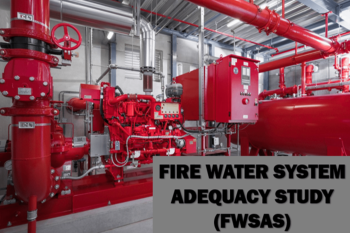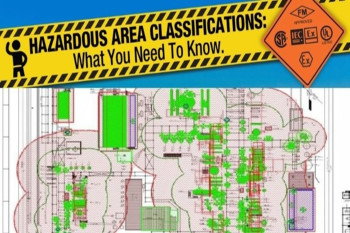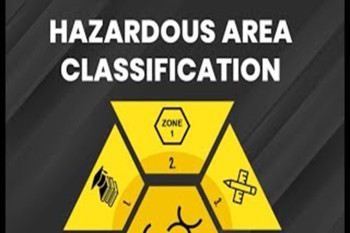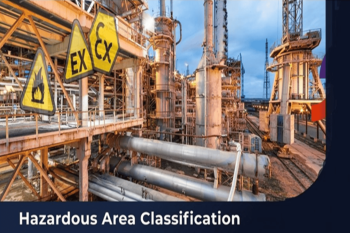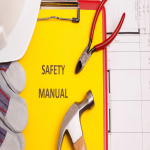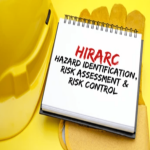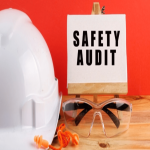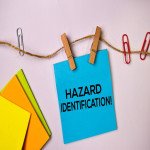METHODOLOGY FOR SAFETY MANUAL
1. Proposed Methodology
1.1. Introduction
The establishment and maintenance of a safe and healthy working environment is a requirement of any organisation. The general Health and Safety Policy statement of the University must be supplemented therefore by detailed reference to our organisation and the arrangements most likely to ensure the success of the Health and Safety Policy within the University.
In the case of each of the defined sites/buildings used by the University, there has to be a clear statement of who is responsible for ensuring that satisfactory standards of health and safety are maintained.
The Organisational Chart gives the details of the allocation of responsibility within the University. Staff with specific health and safety supportive roles are also identified.
The ‘Management Arrangements’ give the detailed procedures for implementing the policy across the whole range of our teaching, research and work activities. Where appropriate reference is made to other information on health and safety that is routinely made available to staff and students.
1.2. Methodology
Data Collection
Preparation:-
Preparing List of safety procedure required
Check the existing procedure and find out the gap
Identifying if any additional safety procedures required
Preparation of Safety Manual report and internal review
Preparation of Draft report and submission to client
Comments incorporation
Final report submission
1.3. Project Deliverables
Table 1 Safety Manual
These chapters may contain the following topics depending up on the requirement of the project:-
1. CHAPTER 01 GENERAL SAFETY RULES _ REGULATIONS-
For Employees
For Contractor And Laborers
For Visitors
2. Chapter 02 Safety Procedures-
Work Permit System
Safety Tags And Locks
Confined Space Entry Permit
Hot Work Permit
Line Breaking _ Vessel Opening Permit
Permission To Start The Work In Plant
Electrical Isolation Permit
Temporary Electrical Supply
Permit To Work On Electrical Distribution
Tank Farm Entry Permit
3. Chapter 03 Operations _ Maintenance Safety-
Procedure For Isolation Of Safety Valves
Hydro-Jetting
Procedure For Preparation Of Equipment
Furnace And Flare Operation
Line Equipment Identification
Safety Appliances Fire Fighting Equipments Checking
Use Of Common Utilities And Temporary Hose Connection
Eye Wash-Showers Fire Sprinklers Checking
Shutdown Reminders
Safety In Machine Shop
Insulation On PipeLines Vessels
Mechanical Material Handling Equipments
Manual Material Handling Procedure
Specific Hot Works _ Safety Precautions
Online Repairs _ Clamping
Blinding _ Blanking
Welding _ Gas Cutting
Sampling, Draining And Venting
Work Involving Rotating Equipments
Working On Or Near Moving Or Running Machinery
Working With Cryogenic Fluids
Leakage _ Spillage Checking
Checks Before Taking Equipment In Line
Specific Hot Works _ Safety Precautions
Sampling, Draining And Venting
Procedure For Safety Valve Testing
Eye Wash-Showers _ Fire Sprinklers Checking
Tanker Farm Safety
Loading _ Unloading Of Chemicals
Procedure For Checking Trip System
Decoking Operation Of PipeLines _ Its Cleaning
Working With Gas Cylinders
Hand Tools And Portable Power Driven Tools
Checking Of Guards
Radioactive Sources
Mechanical System SafeGuards
Identification Of Openings _ Trench Covers
Drum Filling _ Handling
Operational System SafeGuards
4. Chapter 04 Electrical Safety-
Generators (Diesel Engine)
Transformers
Substations Panels
Lightning Protection
Switchyard
Overhead Transmission Lines
Electrical Area Classification,
Earthing of Electrical System
Power driven tools
Hazards Of Electricity
Temporary Electrical Power Supply
Safe Use Of Megger Test Lamp
Low Voltage Distribution System Installations
Protection Against Static Electricity
Electrical Cables
Batteries _ Battery Room
5. Chapter 05 Safety Related To Civil Jobs-
Design Criteria For Civil Structures
Working At Heights
Working On Roofs
Excavation Work(Pits Roads)
Painting Of Structures Buildings
Grit Blasting (Sand Blasting Is Not Permitted Now)
Accumulation Of Water In Drain Channels _ Its Cleaning
Demolition Of Structures _ Buildings
Waterproofing Using Hot Bitumen
6. Chapter 06 Safety In Specific Areas-
Chlorination At Cooling Towers
Safety In Warehouse
Safety In Laboratory
Safety On Road Rail At Gsfc
Safety Guidelines To Follow During Natural Disasters
Construction Safety
7. Chapter 07 Safe Work Environment-
Ventilation And Heat Control
Lighting And Color
Noise And Vibration Control
Good Housekeeping
8. Chapter 08 Chemical Safety Guide
Hazardous Chemicals
Dot Classification
Trem Card
Hazardous Properties Of The Chemicals
Material Safety Data Sheet (Msds)
Gsfc Chemical Safety Guide
Hazchem Panel
9. Chapter 09 Fire Protection Systems At Gsfc-
Sprinklers_Mv Spray System
Hydrocarbon Sensors
Fire Water System
Fire Detection System
Fire Alarm System
Fire Detection System
Portable Fire Extinguishers
Fundamentals Of Fire
CO2 SYSTEM
DELUGE WATER FOAM SYSTEM (DWFS)
STEAM BLANKETING
HALON SYSTEM
FIXED FOAM INSTALLATIONS
PORTABLE FIRE EXTINGUISHERS
FUNDAMENTALS OF FIRE
10. Chapter 10 Safety Appliances And Instruments
Safety Instruments
Types Of Ppa
Safety Appliances_Instruments
11. Chapter 11 Accident, Incident Reporting Investigation-
Accident Investigation _ Recordkeeping
Accident. Incident, Near miss Reporting Procedures
12. Chapter 12 First Aid Measures
Gas Poisoning _ Asphyxiation
Burns
Electric Shock
Head Injury
Cuts Or Buries
13. Chapter 13 Emergency Action Plan-
Groupwise Emergency Action Plan
Supporting Information Thorough Annexures
Off-Site Emergency Plan
Communication Systems
Training, Rehearsal Records
Action On Site
Emergency Organization
Risk And Environment Impact Assessment
Objectives.
14. Chapter 14 Statutory Regulations
Civil Aviation Regulations
Poisons Act, 1919_Rules, 1984
The Indian Electricity Act, 1910_Rules, 1956-2002
Static And Mobile Pressure Vessels (Unfired)
Factories Act, 1948
Manufacture, Storage Import Of Hazardous Chemicals
Gas Cylinders Rules, 1981, 2002
The Petroleum Act, 1934 And The Petroleum Rules, 1976
14.1. Guideline Used for Safety Manual Study
Indian Standard Acts, Rules, and Regulations, or
OSHA and NFPA Guidelines, or
Any other Guideline as per clients' requirement
14.2. Software to be used
Not applicable
DISCLAIMER
HSE Risk Management Services Private Limited accepts no liability or responsibility whatsoever for it in respect of any use of or reliance upon this Methodology by any third party.
Copying this Methodology without the permission of HSE Risk Management Services Private Limited is not permitted.

